The "mysterious" door of Beijing's Temple of Heaven, only one person has passed through it for a hundred years
Built in 1420, the Temple of Heaven, also known as the Temple of Heaven, is located in the eastern city of Beijing (China), and is an ancient architectural work more than 600 years old.
It is known that the Temple of Heaven located in Tuyen Vu district is currently the largest of Beijing's four temples besides the Nhat Dan, Nguyet Dan and Dia Dan. This is a World Cultural Heritage recognized and preserved by UNESCO.
The Imperial Palace or Forbidden City is the royal palace of the Ming and Qing dynasties in China, and is also one of the largest and best-preserved wooden structures in the world.
Regarding the royal construction system of the Ming - Qing period, it is impossible not to mention the Temple of Heaven, because it and the Forbidden City were both built by Minh Thanh To (Vinh Lac De).
Ancient Chinese emperors believed that they were the Son of Heaven, that is, the son of Heaven and the one given the right to rule the country by Heaven. Therefore, they are very interested in offering sacrifices to Heaven to pray for the good of the world. Building altars is an important job and requires careful selection of location, feng shui and architecture.
The Troi altar was built to perform rituals to worship the God of Heaven, Hao Thien Thuong De - one of the most important rituals of the year throughout the dynasties. The altar was built in a somewhat Taoist style, although in fact the worship of Heaven in China dates back even further.
In the 18th century, Qianlong repaired and upgraded the altar to worship heaven. In 1918, the temple was opened for public viewing. In 2005, the Temple of Heaven was repaired and upgraded at a cost of 47 million yuan, before Beijing hosted the 2008 Summer Olympics.
The Temple of Heaven has a harmonious layout, unique structure and splendid decoration. This place demonstrates the concept of the relationship between heaven and earth and humans in Chinese culture as well as the special role of the emperor as "son of heaven". Built with an area of 2.7 square meters, the Temple of Heaven has gone through many ups and downs of history but still retains its original appearance.
On the day of the winter solstice, Vien Khuu stone platform will be the place where kings choose to make offerings to heaven. The stone platform is circular, consisting of 3 floors, each floor has a stone railing. The surface of the stone platform is also circular, symbolizing the perfection and eternity of heaven. Vien Khuu was built according to the yin and yang principle, unifying heaven and earth.
On the stone platform there are 360 small stones symbolizing the number of days in the year. Surrounding the stone platform is a circular wall, with an echo function. If two people stand on either side of the wall, they can hear each other clearly even if they speak softly.
A special point that few people know is that in the Thien Dan architectural complex, there is an extremely mysterious door that only one person has passed through in 100 years. Due to its small size, this door is not easily seen in the magnificent Temple of Heaven complex, so it also attracts little attention.
The door is called "Co Hy Mon", located on the western wall of Hoang Can Palace. The size of the door is not very large and it does not look attractive in terms of design and scale.
In fact, Co Hy Mon was built later, not from the beginning. At that time, the Temple of Heaven had been completed for nearly 300 years, and King Qianlong was over 70 years old.
Everyone knows that Qianlong is a talented and intelligent Emperor, very outstanding in his artistic achievements and governing ability. During his reign, he attached great importance to worship and worship, organizing many days of sacrifice to heaven every year.
When he was over 70 years old, every time he went to Thien Dan to worship, the Emperor had to walk a long distance, cross Dan Be bridge, and perform a series of complex activities during the ceremony.
This is of course not a problem for young people, but it is a big problem for a 70-year-old man like Qianlong. For this reason, the officials discussed many times what to do so that the Emperor could not only worship smoothly but also maintain physical strength and reduce fatigue.
After that, an official came up with the solution that the small door on the wall of Hoang Can Palace should be opened, so that King Qian Long could walk to the place of worship in a shorter distance. The Emperor also agreed with this idea, but he was afraid that future descendants would be lazy, so he thought of a plan.
The small door is inscribed with three words: Co Hy Mon. In addition, it is also stipulated that only descendants at the age of "co hy" (in Chinese parlance, the age of co hy is just over 70 years old) can pass through this door.
However, who would have thought that a hundred years later, none of the royal descendants would live to the age of 70 and go to the Temple of Heaven to worship, so only King Qianlong would be the first and last person to walk through the Ancient Temple. Hymen since it was built.
This was something the Emperor never expected, and it was also something he did not want to see. In a noble family, preserving the bloodline is a top priority. Especially the royal family, the three palaces and six courtyards, and the 3,000 royal families, all for the purpose of maintaining noble bloodlines.
However, even the Qing Dynasty, whose Khang Qian dynasty was famous for its prosperity in history, also encountered decline. During the period of Ham Phong, Quang Tu and Pho Nghi, the number of royal descendants became less and less, there were even no descendants. This is the most sad thing for the royal family.
A small discreet door contains Emperor Qianlong's good hope for the longevity of Qing Dynasty descendants. However, reality goes against this wish.
Princess Ham Huong: The smell of a body part scared the Qianlong, only loved it for 1 night and then abandoned it.  Gia19:51:13 18/06/2023Ham Huong is known as a beautiful princess who always emits a flower-like fragrance, wherever she goes, butterflies follow her. But this beauty has a defect that makes King Qian Long only love 1 night.
Gia19:51:13 18/06/2023Ham Huong is known as a beautiful princess who always emits a flower-like fragrance, wherever she goes, butterflies follow her. But this beauty has a defect that makes King Qian Long only love 1 night.





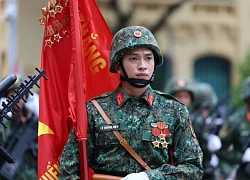



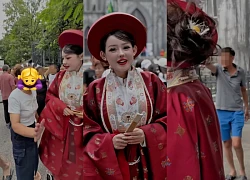









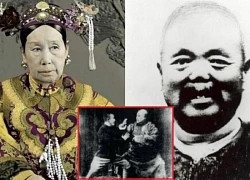 Empress Dowager Tu Xi's bodyguard and lover, standing still still won against Huo Yuanjiap
Empress Dowager Tu Xi's bodyguard and lover, standing still still won against Huo Yuanjiap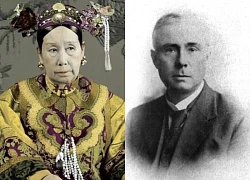 Empress Dowager Tu Xi suspected that she had 3 lovers, 1 foreigner, who were the other 2?
Empress Dowager Tu Xi suspected that she had 3 lovers, 1 foreigner, who were the other 2?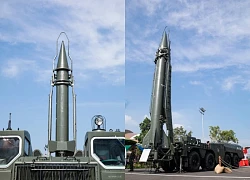 Scud-B ballistic missile causes a stir at the September 2nd military parade: Over 34 tons, maximum range 300km
Scud-B ballistic missile causes a stir at the September 2nd military parade: Over 34 tons, maximum range 300km NASA spacecraft sends final warning before "dying": Earth is on the verge of destruction?
NASA spacecraft sends final warning before "dying": Earth is on the verge of destruction? China: 'Giant straw' pierces from the sky to the ground, revealing a chilling secret!
China: 'Giant straw' pierces from the sky to the ground, revealing a chilling secret! Mystery of the Bermuda Triangle: Discovery of "rogue waves", explaining a series of disappearances
Mystery of the Bermuda Triangle: Discovery of "rogue waves", explaining a series of disappearances What is MMA that helps a girl defeat a tattooed young man in a split second?
What is MMA that helps a girl defeat a tattooed young man in a split second?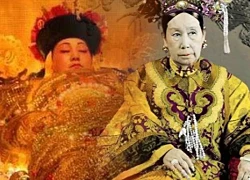 The secret bedroom of Empress Dowager Cixi, the most powerful but with a debauched love "drama"
The secret bedroom of Empress Dowager Cixi, the most powerful but with a debauched love "drama"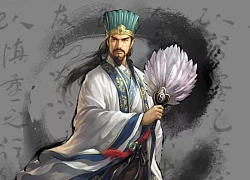 Zhuge Liang left a shocking letter: Lessons of wisdom and IQ that make posterity shudder.
Zhuge Liang left a shocking letter: Lessons of wisdom and IQ that make posterity shudder. The Forbidden City has a magnificent place but no one dares to go, revealing a thousand-year-old mystery
The Forbidden City has a magnificent place but no one dares to go, revealing a thousand-year-old mystery A 100-year-old woman grew a long 'horn' on her forehead and cut it off herself. She is in critical condition. What strange disease does she have?
A 100-year-old woman grew a long 'horn' on her forehead and cut it off herself. She is in critical condition. What strange disease does she have? The mystery of the cold palace in the Forbidden City, where is the address, why is it not on the map?
The mystery of the cold palace in the Forbidden City, where is the address, why is it not on the map?
1 | 1 Discuss | Report